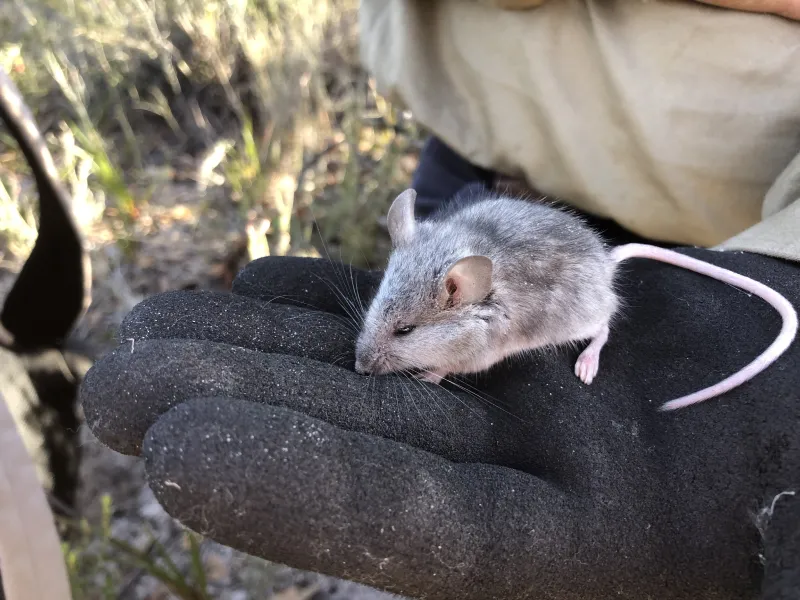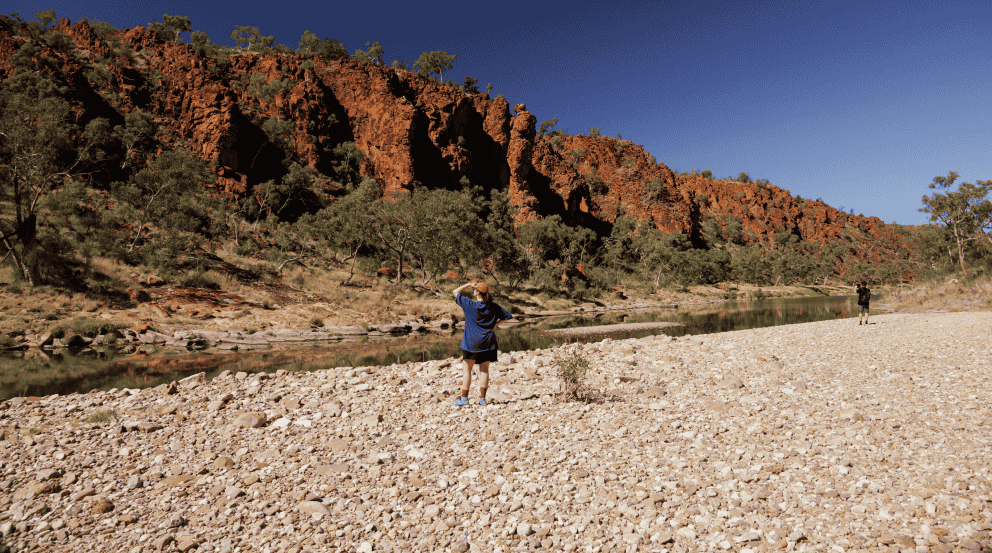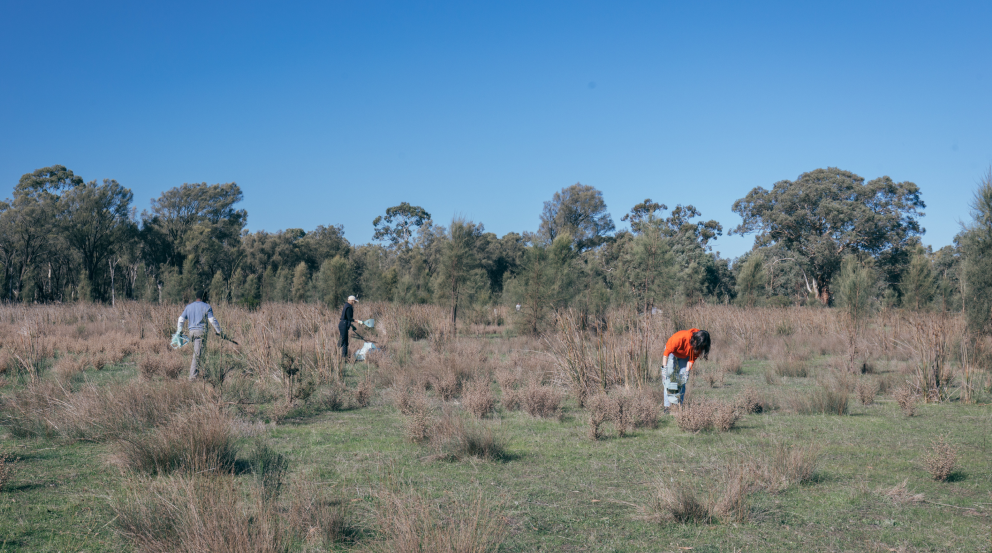Did you know we help steward a private conservation reserve? We’re happy to share some good-news updates from the reserve’s latest round of its Spring Monitoring Program, carried out in partnership with Greening Australia.
Here’s a fun piece of trivia to break out at your next dinner party: If you’re a Bank Australia customer, you can proudly say you help care for a 2,117 hectare conservation reserve in Western Victoria.
Of course, there’s far more to this story than bragging rights. As a customer-owned bank that’s committed to addressing the concurrent climate and biodiversity crises, protecting and restoring nature is one of our biggest areas of impact and investment.
That’s why we purchased our original conservation reserve back in 2008, before more than doubling its size in 2021 with the addition of the Salvana property. The land is managed through our partners, Trust for Nature and Greening Australia, in consultation with Traditional Custodians through Barengi Gadjin Land Council.
Greening Australia recently had boots on the ground at the reserve to carry out their Spring Monitoring Program: an ecological survey undertaken every five years to assess how our shared conservation efforts are going. “We use a suite of tools to look at what plant and animal species there are, what isn’t there anymore, and assess the condition of vegetation,” says Zoe Birnie, a Senior Technical Officer at Greening Australia. “We use that information to continuously learn and adapt our management activities to improve biodiversity outcomes at the reserve.”
Here are three positive stories to come out of the latest survey.
Habitats are slowly but surely being restored
Trees are the ultimate multitasker, producing oxygen, supplying shade, providing homes for native fauna, and storing carbon to help mitigate climate change. Honestly, what can’t trees do?
That’s why we’re pleased to see them taking back their rightful place on the land. This year’s survey Spring Monitoring Program found that tree canopy cover sits at 19% in revegetated areas of the reserve, approaching the desired 21% of cover you’d expect in remnant woodland areas in that region (that is, areas that haven’t been significantly disturbed by things like agriculture, logging, development or non-native species invasion).
We saw 167 hectares of diverse native species revegetation plantings at Salvana (including 95 hectares of Stringybark enhancement), plus 74 hectares of Stringybark and 60 hectares of Buloke enhancement across the Minimay and Booroopki sites. We also trialled some experimental restoration methods with climate-adjusted seeds at the reserves, some of which failed. We’ll use these learnings to help us to improve our approaches and achieve better outcomes in the future.
While the overall numbers are heartening, it’s important to remember that revegetation is a marathon, not a sprint. It takes time for ecological systems to mature and develop structural complexity. “In the revegetated areas, all of the attributes we measured – like native plant diversity, native understorey cover and canopy cover – were lower than in the remnant areas,” Zoe says. “But that’s to be expected. There’s a lag time between undertaking revegetation activities, and being able to observe the biodiversity impact. That’s why it’s important to act now, because it will take some time before those areas develop abundant resources to support our native wildlife.”
.jpeg)
There’s been an increase in animal biodiversity
In this year’s Spring Monitoring Program survey, we saw an increase in native fauna species across the reserve, with 283 different species recorded. While we can chalk some of this up to habitat management, the increase mostly comes from the inclusion of the Salvana property, which will continue to be cared for so those animals can thrive.
Despite cool, wet weather (not ideal for reptile detection), the survey recorded 17 native reptile species across the reserve. Nine of those species were previously unrecorded, including the Dark-Flecked Garden Sunskink (try saying that five times out loud), the colourful Painted dragon and the Common scaly-foot, a legless lizard often mistaken for a snake.
An abundance of bird species – 113 in total – were also recorded across the reserves, including 18 new species. “This basically tells us that there's a lot of resources in the reserve that a diversity of birds need,” Zoe says, “meaning we’re doing something right!”

Insects are not only the most diverse taxa, but also the unsung heroes of the animal kingdom when it comes to ecosystem services, including pollination, food production, and nutrient cycling and decomposition. The spring survey recorded 143 unique invertebrate species, which was 37 more than the baseline survey in 2016, and also largely in response to the inclusion of Salvana.
Finally, we recorded two new species of mammals, including the absurdly cute Western Pygmy Possum, and Silky mouse.

More threatened species are calling the reserve home
We’ve previously written about threatened species, why they matter and how you can help them recover. Protecting native habitats is a huge part of that, and that’s one of the conservation reserve’s main goals.
The survey recorded nine listed threatened fauna across all properties on the conservation reserve. Five of those were at Salvana, including the endangered Fiery Jewel Butterfly, which is as beautiful as it sounds. The original properties recorded seven threatened fauna (with some of these species overlapping with Salvana’s count).
It wasn’t just threatened animals benefiting from the reserve; ten threatened flora species were also recorded, including the Slender Cup Flower, Bangham Rustyhood and Pink Zieria.
Bram Mason, Bank Australia’s Nature and Biodiversity Manager, says these wins help to affirm the potential and the value of science-based conservation measures to help protect the natural world, and everything within it. “The Conservation Reserve is doing two key things,” he says. “One of them is protecting an area of nature. The reserve operates under a conservation covenant with Trust for Nature, so it’s protected from development forever.
“The second is enhancing the existing nature to create (or recreate) additional habitat for all of the plants and animals in that landscape. This creates the resilience needed for species to avoid extinction – to maintain their intrinsic right to survive.”

Find out more about Bank Australia’s conservation reserve, managed in partnership with Trust for Nature, Greening Australia and in consultation with Barengi Gadjin Land Council.
.webp)







